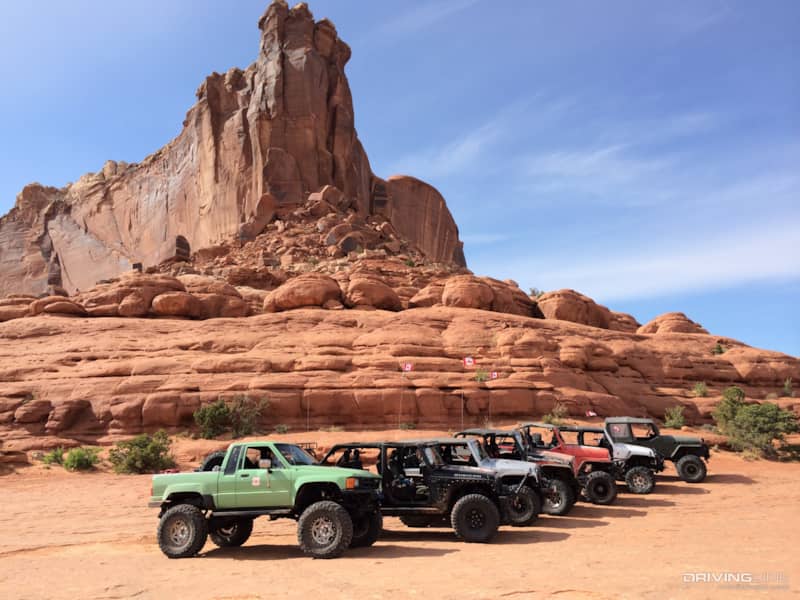How Did Moab Trails Get Their Names?
Did you ever wonder how Moab’s famous 4x4 trails and obstacles got their names? Some of these names are fairly straightforward, like Cliffhanger, that runs along a cliff, or Kane Creek Trail, that follows Kane Creek.
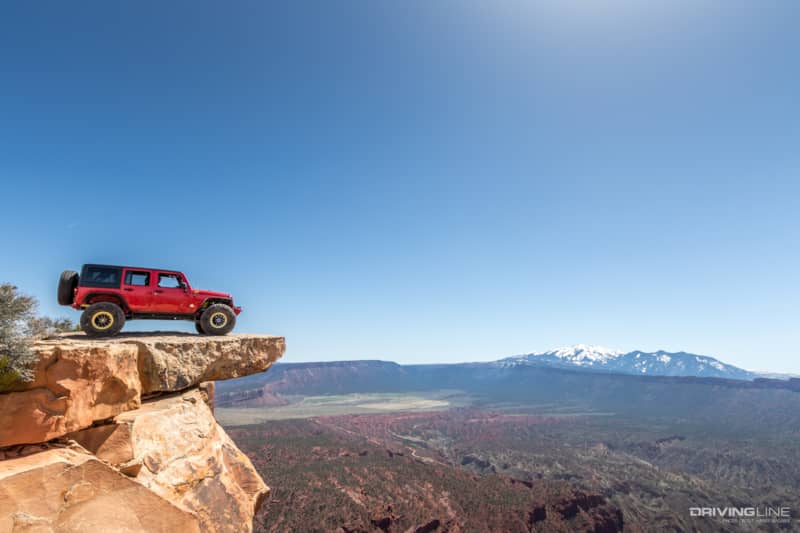
Others though, like Gold Bar Rim and Poison Spider Mesa are not as obvious as the slickrock trails in the area. The term “slickrock” itself seems like a misnomer, as the sandstone in Moab is more akin to sandpaper for tires like Nitto’s Trail Grapplers and Ridge Grapplers. But for early pioneers traveling in covered wagons with wood spoke wheels ringed in metal, the sandstone made it nearly impossible to come to a stop on even the slightest incline.
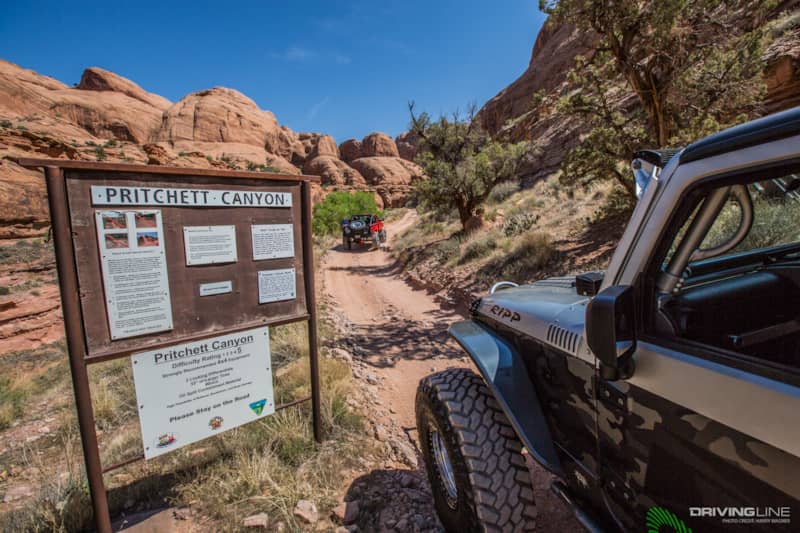
Trails fan out in every direction from Moab, which is split into four quadrants with the Colorado River running east-west and Highway 191 running north-south. Arches National Park is in the northeast quadrant, along with trails like Top of the World and Rose Garden Hill. Top of the World is so named because you can drive out to a 3,000 foot tall cliff face overlooking Onion Creek and Fisher Valley.
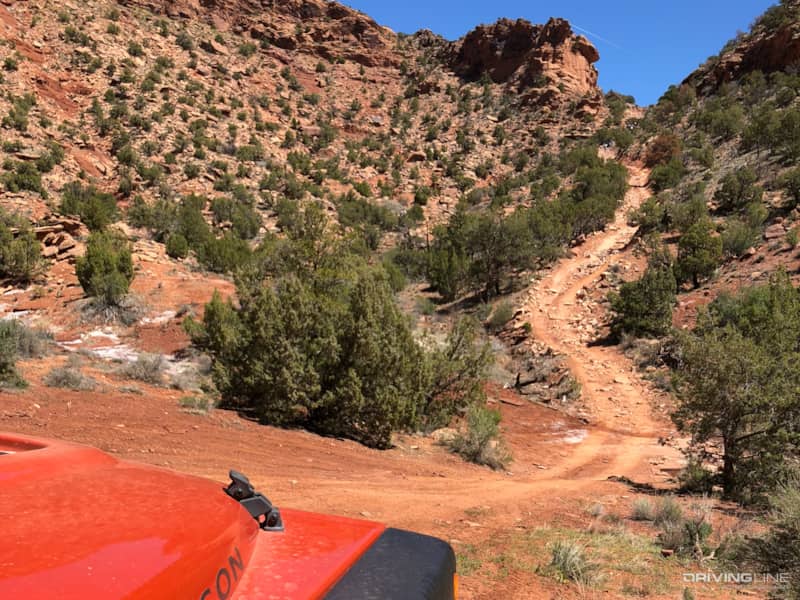
Onion Creek itself is named for the foul smell in the area as a result of the mineral-rich soil that contains sulfur and alkali. Rose Garden Hill is one of the many satirical, tongue-in-cheek trail names found in Moab as it is not, in fact, a rose garden at all.
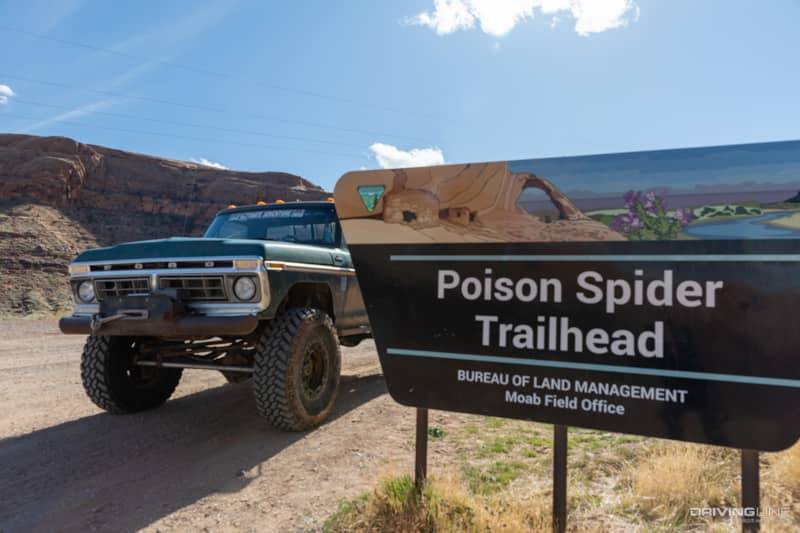
Many of the trails in Moab are old mining routes that were established during the uranium boom in the 1950s following World War II. There is evidence of this just north of the Colorado River on the west side of the highway, and the Intrepid Potash Mine is still active in this area. Trails in this quadrant include Poison Spider Mesa, Gold Bar Rim, Golden Spike, and Rusty Nail. Poison Spider Mesa got its name from the legend that a little girl named Mary Jane Francis died there from the bite of a poison spider in 1896. We haven’t seen many black widows in Moab, but the name stuck none the less.
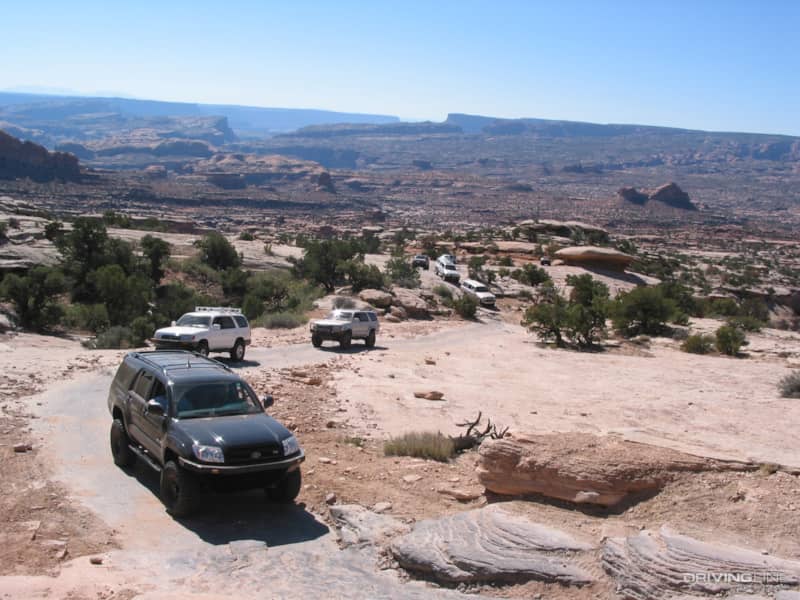
Gold Bar Rim follows along the edge of Gold Bar Canyon, which was actually not named for precious metals found in the area, but rather for a sand bar at the bottom of the canyon. Golden Spike was developed by the Red Rock 4 Wheelers in 1989 to connect Gold Bar Rim and Poison Spider Mesa. The name is a nod to the final railroad spike used to connect the transcontinental railroad in northern Utah in 1869. Rusty Nail is a play on Golden Spike, since it is much more challenging a more ominous name was chosen.
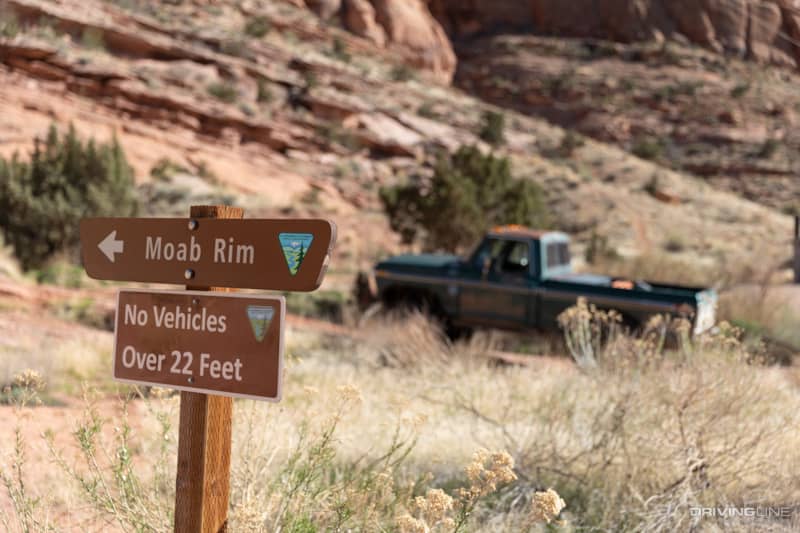
Across the Colorado River lies Moab Rim, Prichett Canyon, Cliffhanger, Behind the Rocks, and Kane Creek trails. Moab Rim, as the name implies, climbs up the canyon rim and ends with a spectacular view of Moab Valley.
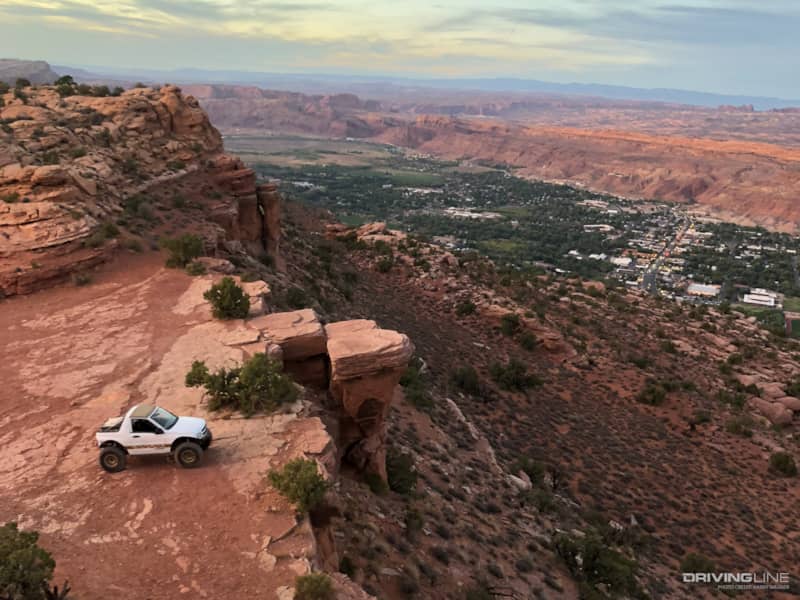
We couldn’t determine who Pritchett Canyon is named after, but obstacles like Chewy’s Hill, which is all chewed up, Rocker Knocker, where anyone without rock sliders dents their rocker panels, and the Rockpile that has been stacked with rocks, are all straightforward.
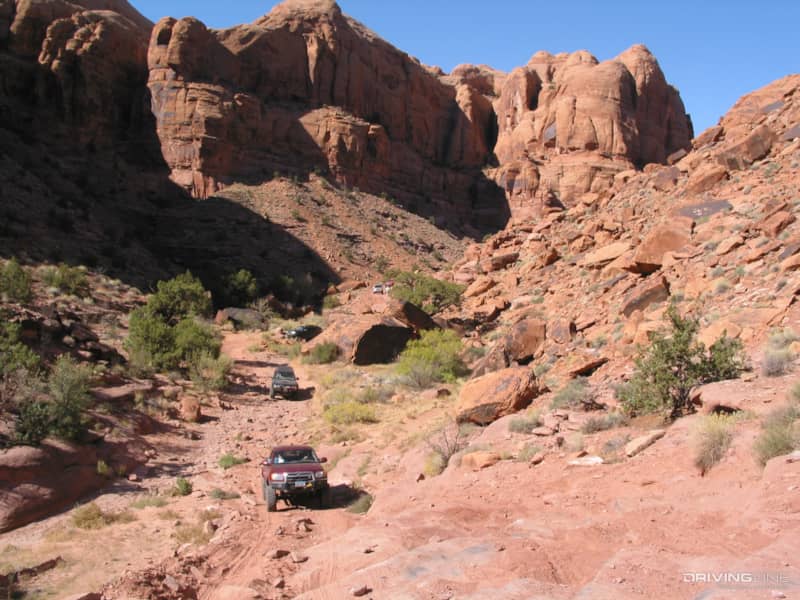
Cliffhanger’s name is rather obvious. The trail (and the Animas Fork bike trail) follows along the edge of a 1,000 foot cliff above Jackson’s Hole and is not for the faint of heart.
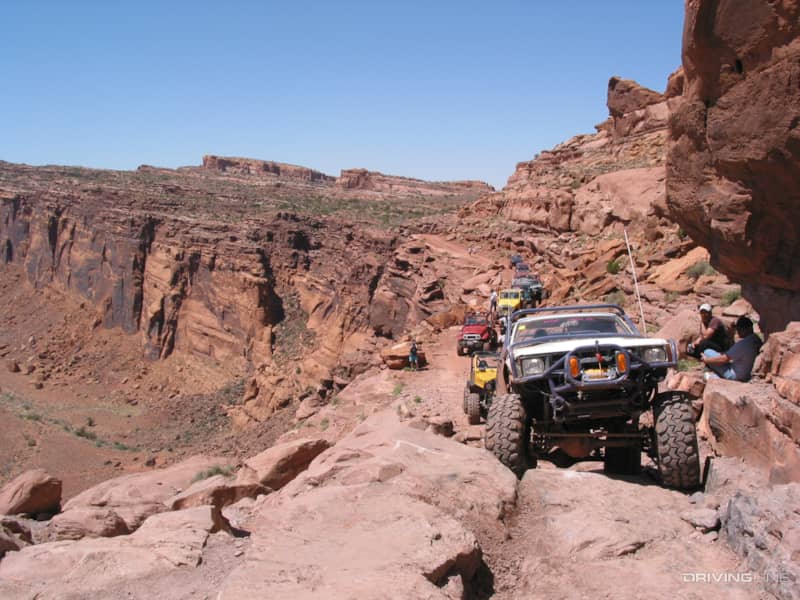
Kane Creek Trail follows Kane Creek, as you would expect. The most challenging obstacle on the trail is Hamburger Hill, which has been ground up more than chuck roast over the years.
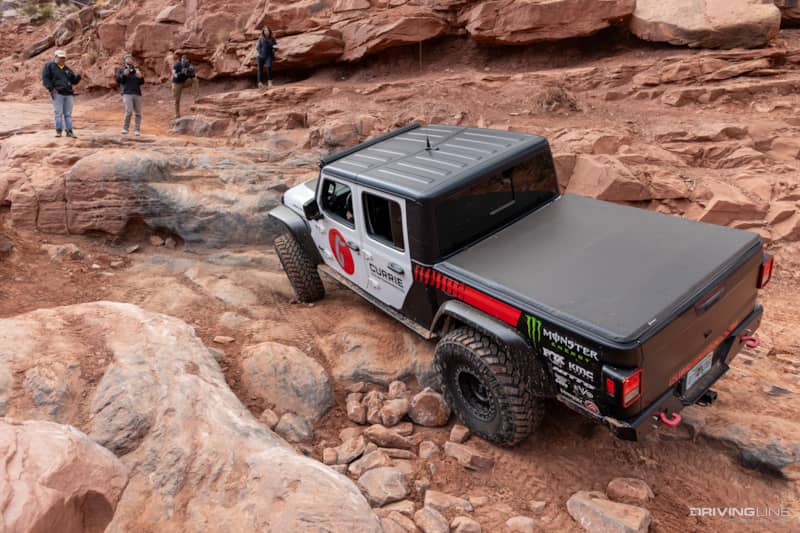
Beyond Pritchett Canyon and Kane Creek is Behind the Rocks, with obstacles including High Dive, Upchuck, and White Knuckle Hill. All of these obstacles involve gravity-defying ledges where more wheelbase is a benefit.
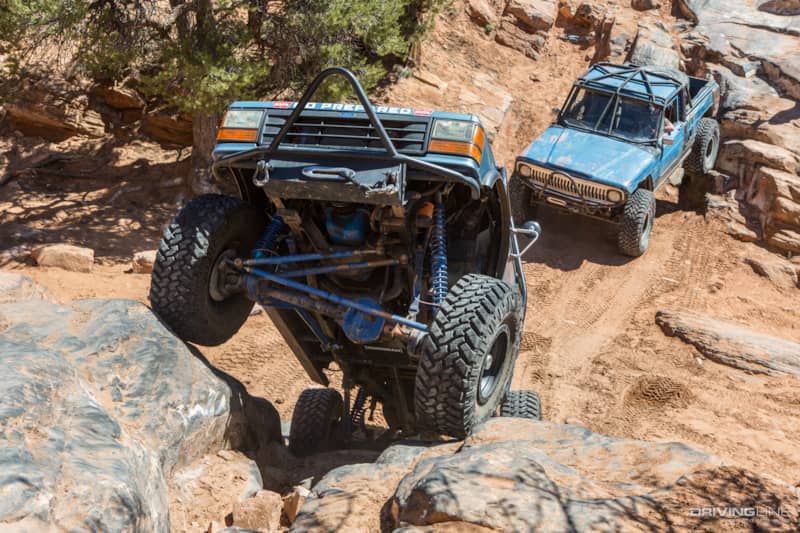
Just east of Moab is Sand Flats Recreation Area, where Hell’s Revenge and Fins and Things are located. “Fins” are the geologic features formed in the Navajo Sandstone formation as the sand erodes over time.
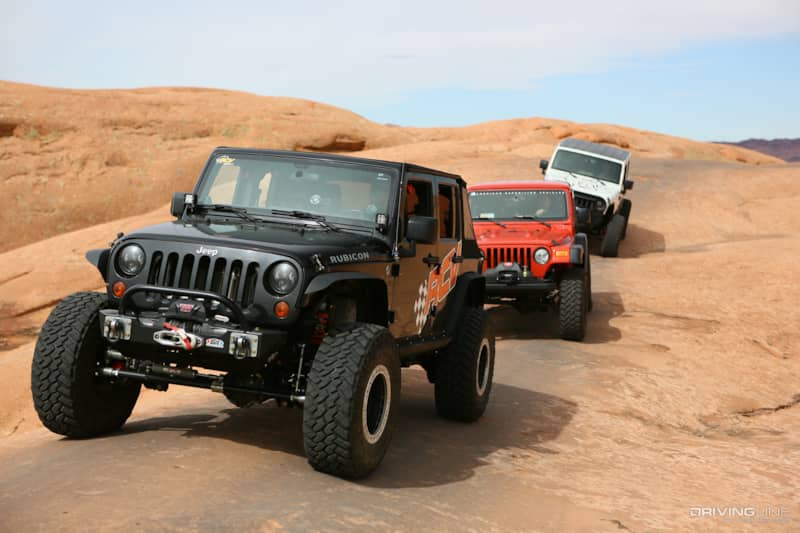
We are uncertain how Hell’s Revenge originally got its name, but obstacles including Mickey’s Hot Tub, Tipover Challenge, and Escalator all have significance behind their names. Mickey’s Hot Tub is named for Dan Mick, the legendary Moab trail guide that can still be seen driving backwards through the hot tub with a Jeep full of customers.
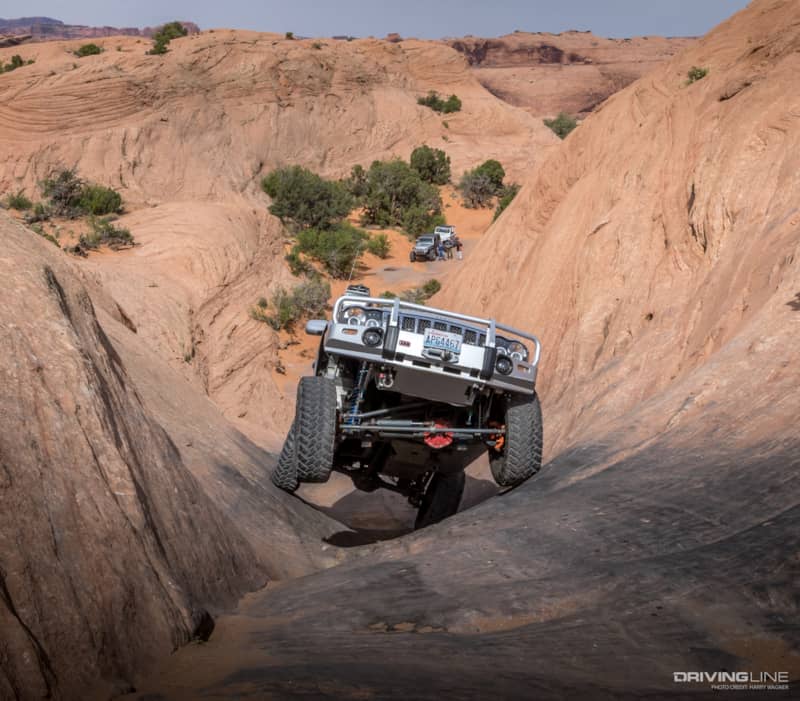
Tipover Challenge, as the name implies, is off camber and has claimed more than one vehicle in the past. And the Escalator is a sequence of ledges that look like giant steps.
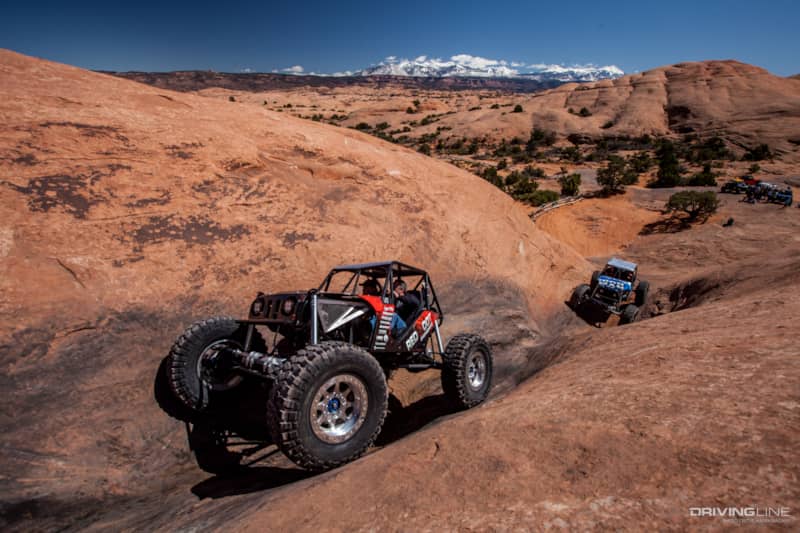
On Sand Flats Road, before reaching the recreation area, there is a spot behind the landfill called Potato Salad Hill. This colorful name comes from an unfortunate off-roader who rolled on the hill, spilling the contents of his vehicle all over the rocks. That included, you guessed it, potato salad.
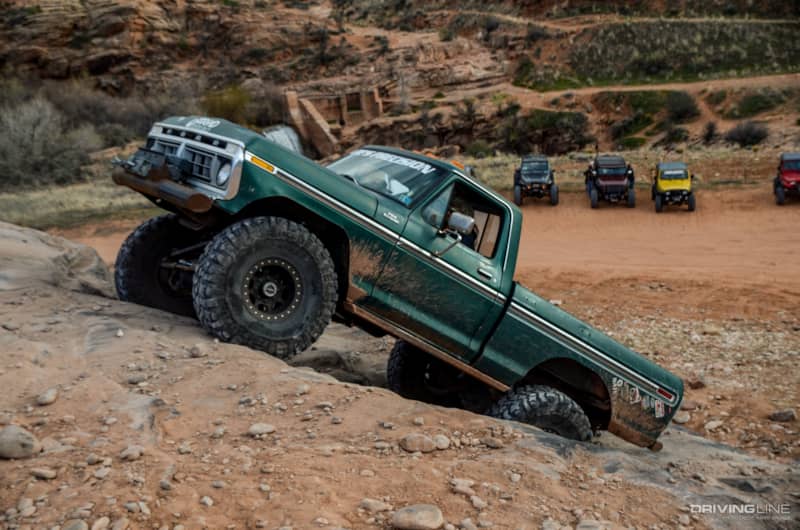
These are just a few of the colorful stories that resulted in the names of trails and obstacles in the Moab area. The best way to understand the names of the different obstacles and trails is to go experience them for yourself. Then you will know exactly what they mean by Cliffhanger and White Knuckle Hill!
